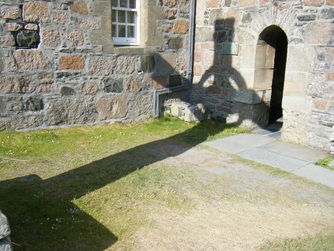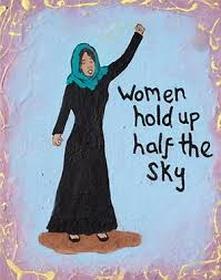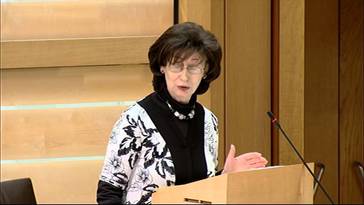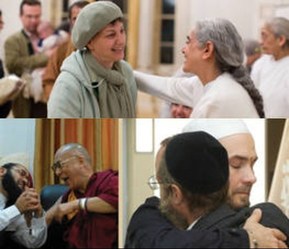
The problem with religion - or maybe it's the saving of religion - is that there are many interpretations and it's tragic I think when negative ones take hold, without realising the limitations of language and understanding. For Christians the cross doesn't symbolise violence or God's vengeance. Rather it is the climax of Jesus' life. According to John's Gospel Jesus realises that this is the accomplishment of his life - not in the sense of success but in the sense of a life well lived. Jesus' mission was to challenge the authorities of his time - both religious and political in that he wanted to establish a new way of life which he called the Kingdom of God. This was a way of life in which individuals and not institutions were at the centre, where the poor, the marginalised, those recognised as sinners and outsiders, women, the sick were included. The focus of Jesus' life was healing, preaching about God's love and God's mercy. His religion was a religion of the heart from where he interpreted the law. And of course the establishment didn't like it. His way of life and his message was a peaceful protest against dehumanising institutions and he was killed because he was true to this message to the end. The Cross is a symbol of Jesus' integrity, of a self-sacrificing love and mercy which he lived right to the end of his life. It has to be seen within the context of his life.
Recently I heard someone say that the Cross shows us in body language what mercy and love look like - a commitment that does not run away, that forgives, that serves even those who would abandon you. In John's Gospel it is said that Jesus heart was pierced by a sword. His heart was broken, something which we recognise as coming from loving. But the Cross also shows us what humanity is like - that we react negatively to someone who lives according to an ideal, who is totally loving and merciful and who does not play the power game. We know this to be true from our own time with people like Mohatma Gandhi and Martin Luther King. Somehow it seems the world cannot cope with goodness. Here in Glasgow we have our own example of that this weekend. A Muslim shopkeeper was murdered by someone of his own faith because he put a message on social media wishing Christiand a happy Easter. Asad Shah was a devout man who often talked of the need for peace between religions and his sorrow at the way in which religions had fallen short of this ideal. It's as though, like Jesus, he has been nailed to the cross because his belief, his ideal disturbed someone for whom the institution was more important than good relations. But hopefully like Jesus his message will not die and his death may even lead others to follow his example.
It's understandable that my Buddhist friend found the image of the Crucifixion difficult and disturbing. The violence that we see in today's world shows us that it's a reality and contemporary. The image is also not too distant from some Buddhist texts. Within Mahayana Buddhism the ideal is of a Bodhisattva, a being willing to sacrifice everything, even his or her own salvation for the sake of the enlightenment of all sentient beings. A famous text illustrates this. It's called the Bodhicharyavaharasutra and there is a shortened version called the Thirty Seven Verses on the Practice of a Bodhisattva. Verse 13 reads, ' If in return for not the slightest wrong of mine
Someone were to cut off even my very head
Through the power of compassion to take all his negative actions
Upon myself is the practice of a bodhisattva.
In this sense Jesus can be seen as a Bodhisattva but perhaps in some way so can Asad Shah.





 RSS Feed
RSS Feed
